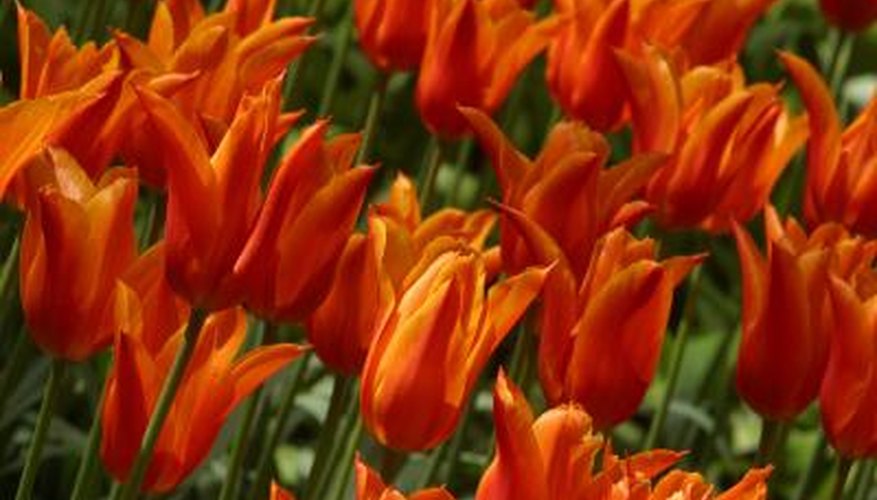Tulips can thrive in a garden or as a potted plant. The species is a perennial flower, meaning it should bloom every year. This type of plant is a member of the liliaceae family and is native to the foothills of the Himalayas, Eastern Turkey and countries in Southwest Europe. It grows best in conditions that resemble its native land such as dry, hot summers and cold weather. You need to supply tulips with direct sunlight and keep the soil moist for a successful bloom every year.
Adaptations
Because tulips leaves are thick, this characteristic protects it from drying before every blooms. Tulip flowers usually have vibrant colours that attract more insects to the flower for pollination. In addition, tulips start to sprout deep in the soil, which protects the plant from extreme temperatures.
The Bulb
The tulip's bulb has leaves and flower buds situated at the base surrounded by a protected outer layer. Below the bud sits the basal plate where the roots develop. This helps tulips grow in heavy clay or rocky soil. The plant has small buds along the basal plate that grow into new bulbs. In addition, new bulbs can grow on the stolons that sit along the edge of the short side shoots.
- The tulip's bulb has leaves and flower buds situated at the base surrounded by a protected outer layer.
Leaves
Tulips usually develop from two to six leaves that appear slender and straight, resembling grass. The tulip's leaves transform into the waxy, fleshy parts of the flower in which the tissue can withstand dry temperatures.
Cultivation
Tulips produce large blooms and come in numerous colours. The more you grow tulips, the more they begin to adapt to particular garden condition. Tulips have adapted to particular circumstances, especially if gardeners frequently water plants in the summer months and the atmosphere constantly changes such as the longer and warmer winters.
